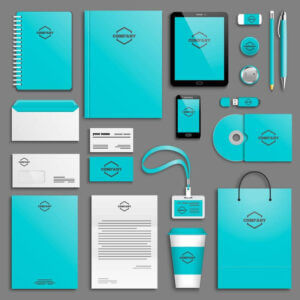- Advertising (0)
- Branding (5)
- Business awards (2)
- Business Development (19)
- Business Growth (7)
- Business listening (1)
- Buyer behaviour (4)
- Client loyalty (6)
- Client Relationship Management (5)
- Conferences (0)
- Conferences and Events (3)
- Content marketing (4)
- Customer experience (11)
- Customer feedback (4)
- Digital marketing (6)
- Direct mail (0)
- Endorsements and recommendations (5)
- Exhibitions (3)
- Exhibitions, Conferences and Events (0)
- GDPR (0)
- Internal marketing (0)
- Key client management (5)
- LinkedIn (5)
- Marketing budgets (3)
- Marketing campaigns (8)
- Marketing Communication (7)
- Marketing measurement (1)
- Marketing on a tight budget (4)
- Marketing planning (20)
- Marketing strategy (17)
- Networking (8)
- News (3)
- Online advertising (1)
- Personal branding (4)
- Personal Development (0)
- Pitching for work (4)
- Presentations (0)
- Pricing and discounting (2)
- Promotional events (0)
- Reputation management (2)
- Sales process (3)
- Search engine optimisation (1)
- Small business marketing (1)
- Social media (7)
- Supplier Management (1)
- Thought leadership (1)
- Website development (3)
Create the right impression: affordable branding techniques

Branding isn’t the exclusive domain of large corporates and their eye-watering marketing budgets. There are simple and affordable ways to create a positive brand for even the smallest of organisations. Whether you’re selling products, services or expertise, branding has a powerful part to play in drawing customers to you.
For the unfamiliar, your brand is more than just a logo – it’s a number of facets about your business or offering that give people an impression about it.
It includes the quality of your products/services, how you deliver those, the look and feel of all your ‘visual’ elements (packaging, website, documents, advertising, vehicles, clothing, signage etc) and the personalities and capabilities of your people who have an effect on the customer experience. Collectively these build an impression or feeling about your business and that’s your brand.
The appeal of credibility and reassurance

By way of an example, let’s compare two accountants each building their own business. You meet them at a networking session. The first person you meet is Anne. She’s nicely presented and talks well to you. She leaves you with a business card that is printed on flimsy card and has a yahoo email address and a mobile phone number as the main contact point. There is a website mentioned on the card but, after the session when you look at this, it comes up as ‘under construction’.
The second accountant you meet is Kate. Kate is also nicely presented and talks well to you. She gives you a business card that looks and feels professionally designed. It has a logo and on the back lists the key areas Kate helps her clients with. Her business is KZQ & Associates and she owns the domain name. This is reflected in her email and website address.
Kate has a landline business phone number as well as a mobile shown on the card. When you look at her website, its design also ties in with the colour, font and imagery on her business card. In fact, there are also some handy free fact-sheets and guides to download around business accounting issues and these too reflect the colours, font and look of the business.
Kate clearly follows and shares the latest news affecting the accounting and finances of small businesses as this is evident in her social media channels. Everything is consistent and has a professional appearance and as a result, reassures you that this is a stable company. You probably give Kate a call in the first instance as, let’s face it, you want an accountant who is credible and looks committed to their business.
Kate has no doubt invested more in her brand and the first impressions her business gives, but it’s probably not required a massive budget. In the long-run, this investment will pay for itself many times over in terms of business enquiries.
Build on your real strengths and what engages your customers
 When creating your branding, the first step is to think about the strengths of your business offering – the real strengths you have and the ones which customers recognise you for (not ones you wished you had).
When creating your branding, the first step is to think about the strengths of your business offering – the real strengths you have and the ones which customers recognise you for (not ones you wished you had).
If you are just starting out think about your own strengths in previous roles (try Gallup’s Strengthsfinder now called Clifton Strengths) or the qualities that your product or service possesses. If you’re unsure about the latter, ask your customers what they particularly like or value in what you do. It is important to build your brand on real strengths rather than aspirational ones, as you are more likely to deliver these now, and over time, to your market.
You then need to think about the customers you want to attract. What visuals appeal to them and what would they ignore? What service/product components engage them and which switch them off?
Creating your ‘visuals’
 Let your market insight and your strengths now influence the visual image you forge for your business offering. Depending on what your business does, your ‘visual’ image will be evident through things like:
Let your market insight and your strengths now influence the visual image you forge for your business offering. Depending on what your business does, your ‘visual’ image will be evident through things like:
- Your logo, stationery, documents (electronic/paper)
- Your website, email appearance, social media sites
- Your packaging
- Yours and your team’s appearance when interacting with customers
- Your premises, signage etc
- Your vehicles
It does pay to invest up front in a good design to avoid having to fork out for redesigns further down the line. Make sure any designs reproduce clearly in both printed and digital media and in treatments from the very small to the very large.
Opt for a relatively simple colour palette for your company that you stick to (say 1-3 colours max) and a font that’s clear, attractive to your target market and which won’t date too quickly. If part of your business offering includes being passionate about certain values or representing a certain level of quality then this needs to be factored into your ‘visuals’ too… for example using recycled materials (and communicating this), opting for elements that feel as well as look luxurious etc.
The power of consistency
 With constant change the norm in life, humans still find reassurance in consistency. Consistency is something that’s quite hard to achieve and maintain over time and so positive examples impress and often become associated with reliability and trustworthiness.
With constant change the norm in life, humans still find reassurance in consistency. Consistency is something that’s quite hard to achieve and maintain over time and so positive examples impress and often become associated with reliability and trustworthiness.
If you can be consistent in the application of your image, colours, font, message etc across all your different visuals, people will find it easier to remember your business and will begin to view it as a stable enterprise, worth their investment.
The experience you create
 Obviously, the visual side is only part of your branding and the phrase ‘mutton dressed up as lamb’ gives a warning. Even if you have tried to create a visual impression of professionalism and high quality, if people’s experience of engaging with your business offering is negative – no level of investment will help you secure that vital customer loyalty or attract new customers.
Obviously, the visual side is only part of your branding and the phrase ‘mutton dressed up as lamb’ gives a warning. Even if you have tried to create a visual impression of professionalism and high quality, if people’s experience of engaging with your business offering is negative – no level of investment will help you secure that vital customer loyalty or attract new customers.
So consider again your strengths. In terms of the experience side of your business, what are your:
- Service standards – turnaround times, responsiveness, ability to keep customers informed?
- Communication styles – are you and your people easy to understand? Are your communications clear, free from typos, easy and quick to read?
- Personalities – how personable are you and your people to customers?
- Product or service quality – how faultless is your product or service? What added value do you deliver within the price people are happy to pay? Are people satisfied with what you deliver?
Avoid undermining your brand
 Reputations take time to build but can fall in an instant and, once fallen, they are hard to rebuild.
Reputations take time to build but can fall in an instant and, once fallen, they are hard to rebuild.
Take care that your product or service quality isn’t undermined in any way. Find ways to prevent the business offering deviating from the strengths that your customers favour you for. Remember that what you and your people say and do in other areas can still have a detrimental effect on your business.
Be mindful to establish social media policies and codes of conduct if you feel it’s an issue. Of course recruiting people who fit with your business strengths and values will definitely help, as will training and clearly communicating the quality standards, strengths and the ethics you are building your business offering around.
Summary
Branding is affordable to the smaller business. It is achieved by sticking to your real strengths, adopting a consistent approach in all your visuals and delivering an experience that your customers value for the money they’re prepared to pay. Further consistent application over time and reliably good customer experience will be key to your long-term success. Your brand’s reputation is worth protecting. Remember no trademarking, copyrighting and expensive visuals will safeguard a brand if the quality and experience it represents falters in your customers’ opinions.
For more advice on marketing your business contact us or tel. 01483 429111.
